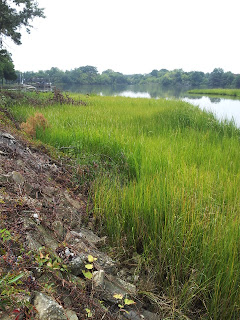Presentation on the Dendrology of the Lynnhaven River Watershed
Monday, September 30, 2013
Sunday, September 29, 2013
Thursday, September 26, 2013
The Lynnhaven River watershed is a subwatershed of the Chesapeake Bay watershed. It is one of eight subwatersheds identified in the City of Virginia Beach.
This is a map of the Lynnhaven River watershed.
As you can see, the waters that make up the watershed drain into the Lynnhaven Bay and ultimately into the Chesapeake Bay.
This is a land use map for the Lynnhaven watershed. The majority of the watershed is highly developed, as there are only a few areas of undeveloped land. Most of the area is residential with some commercial or industrial areas scattered about. Naval Air Station Oceana is also located in the Lynnhaven watershed.
Thursday, September 12, 2013
During Hurricane Irene in August 2011, the Hampton Roads Sanitation District (HRSD) experienced a sewage spill due to a ruptured pipe. The spill and the subsequent repair sent more than 400,000 gallons of raw sewage pouring into a small cove in the Lafayette River. Approximately 300 square feet of the surrounding wetlands were eroded and some plants were damaged during the incident. As part of a remediation effort, HRSD backfilled the area, so that the filled grade matched the pre-storm grade. Afterwards, HRSD began a monitoring period to ensure that the vegetation would return naturally. Using GIS, a virtual grid was created in order to compare the growth of the plants over time. After one growing season, it was determined that the vegaetaion would not return on its own, consequently, HRSD planted Spartina alternaflora, a native wetland plant. The pictures here depict the damage done and how HRSD restored the wetlands to pre-event conditions.
A large part of the Lynnhaven River restoration plan includes planting oyster reefs to help improve water quality. Because of their need to filter water for food, they are beneficial in improving water clarity. In addition, oyster reefs provide an habitat for other organisms. This Chesapeake Bay Foundation video illustrates the oysters' ability to "clean" the water.
Excerpt from The Chesapeake Bay Foundation's documentary "Common Ground"
Subscribe to:
Comments (Atom)










